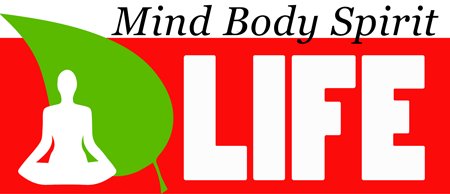4 Types of De-Armoring Practices
By Susie Spades, PhD

In our fast-paced, stress-driven world, it’s easy to become disconnected from our own bodies. Many of us carry the weight of old wounds; emotional traumas, suppressed memories, sexual shame, and stress patterns, deep within our musculature, fascia, and energetic systems. Over time, these unexpressed energies create tension, pain, numbness, and even illness.
De-armoring is a powerful holistic practice designed to release these emotional and energetic blockages stored in the body, allowing for greater flow, aliveness, emotional freedom, and embodied presence.
What Is Body Armoring?
Body armoring is a term first popularized by psychiatrist Wilhelm Reich, who observed that emotional suppression leads to physical rigidity in specific areas of the body. Reich’s theory was that unexpressed emotions, especially fear, grief, anger, and shame, can crystallize in the muscular and nervous systems, creating what he called “armor.”
These energetic armors are your body’s attempt to protect itself from pain. While once useful for survival, they eventually limit your ability to feel deeply, connect authentically, and experience pleasure fully.
What Is De-Armoring?
De-armoring refers to the intentional process of releasing these held patterns; physically, emotionally, energetically, and sometimes sexually. It can be done through:
- Touch and Pressure: Applying deep, conscious pressure to certain tension points in the body.
- Breathwork: Using breath to move energy and emotions through the body.
- Sound: Vocal expressions like moaning, screaming, or sighing to free stuck energy.
- Movement: Allowing spontaneous or guided movements to support release.
- Emotional Expression: Encouraging safe, uninhibited release of tears, rage, laughter, or joy.
The goal isn’t to “fix” anything, but rather to open, feel, and liberate what’s already there.
Types of De-Armoring Practices
1. Physical De-Armoring
Practitioners use slow, intentional pressure on specific areas such as the jaw, solar plexus, thighs, yoni, anus, and chest to activate emotional memory and allow for release. This can bring up crying, shaking, laughter, or memories; allowing the body to process what was once suppressed.
2. Sexual De-Armoring
Many people hold tension, trauma, or shame in their pelvic bowl. Yoni and lingam de-armoring are sacred practices that use touch, breath, and presence to release numbness, pain, or disconnection in the genital area. This practice often leads to profound healing, emotional release, and heightened sensitivity or pleasure.
3. Energetic De-Armoring
Using tools like Reiki, chakra alignment, crystal therapy, or shamanic practices, this approach works on the subtle energy fields. Practitioners might channel energy or guide the client in breath and visualization to clear stagnant frequencies and allow the body to re-harmonize.
4. Somatic and Emotional Release Work
These methods encourage spontaneous body movement, catharsis, and primal expression (like in bioenergetics or TRE—Tension and Trauma Releasing Exercises). Clients may scream, sob, shake, or laugh uncontrollably as their body releases held tension.
Benefits of De-Armoring
- Emotional Liberation: Letting go of sadness, rage, fear, or grief held for years.
- Restored Sensitivity: Numb or disconnected areas of the body become alive again.
- Enhanced Pleasure and Sexual Vitality: Removing blockages in erogenous zones can dramatically increase pleasure and orgasmic potential.
- Improved Mental Clarity and Inner Peace: When the body relaxes, the mind follows.
- Greater Intimacy and Self-Connection: You feel safer being vulnerable, open, and authentic.
Is It Safe? Who Is It For?
De-armoring is generally safe when guided by a trained and trauma-informed practitioner. That said, it’s an intense process that can bring up buried memories or overwhelming feelings. It’s best suited for individuals who are ready to face their inner landscape and have a support system in place.
It’s particularly beneficial for:
- Survivors of emotional or sexual trauma
- Those with chronic body tension or sexual numbness
- Anyone seeking deeper emotional or spiritual growth
- People desiring more pleasure, freedom, and embodiment
What to Expect in a Session
A de-armoring session is sacred and intentional. It usually begins with:
- Consent and Boundaries: Discussing the process and establishing what feels safe.
- Somatic Scanning: Locating physical or energetic tension areas.
- Breath and Presence: Using breath to stay grounded and present.
- Pressure and Release: The practitioner may apply slow, firm pressure to areas while guiding you to feel and express.
- Aftercare: Gentle integration, grounding, hydration, journaling, and space to rest.
Can You Practice De-Armoring on Yourself?
Absolutely. While working with a practitioner can take you deeper, self-de-armoring is a powerful daily or weekly ritual for reconnecting with your body. Here’s a simple practice to try:
Simple Self De-Armoring Ritual
- Set the space: Dim lighting, soft music, candles, and a comfortable place to lie down.
- Begin with breath: Inhale deeply through the nose, exhale fully through the mouth.
- Touch with intention: Apply slow, firm touch or massage to areas that feel tense; jaw, chest, abdomen, pelvis.
- Express what comes up: Cry, moan, sigh, or move however you feel.
- Close with compassion: Wrap yourself in a soft blanket or robe, thank your body, and rest.
Final Thoughts
De-armoring is about liberating the truth of who you’ve always been beneath the tension. Your body is not your enemy; it is your ally, holding on until you feel safe enough to let go.
When you choose to de-armor, you reclaim your right to feel, to express, and to thrive; fully, fiercely, and freely.
So breathe deeply, open gently, and remember: your softness is your power.



